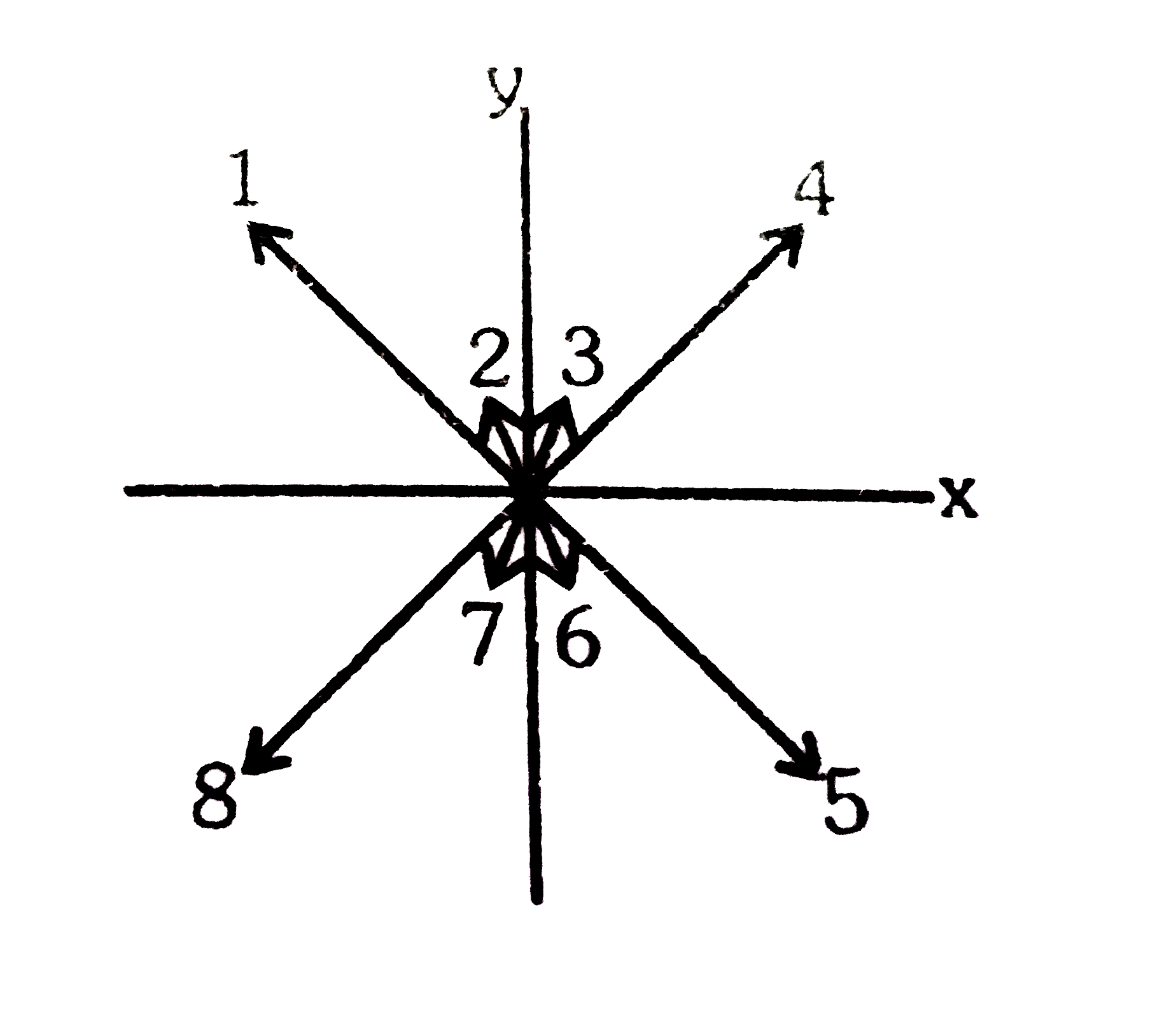The resultant of the forces and is
125
The correct Answer is:A
To find the resultant of the forces →F1=4^i−3^j and →F2=6^i+8^j, we will follow these steps:
Step 1: Write down the given vectors
We have:
→F1=4^i−3^j
→F2=6^i+8^j
Step 2: Add the vectors
To find the resultant vector →FR, we add →F1 and →F2:
→FR=→F1+→F2
Step 3: Combine the components
Now, we combine the ^i components and the ^j components separately:
→FR=(4+6)^i+(−3+8)^j
Step 4: Calculate the components
Calculating the components:
- For ^i:
4+6=10
- For ^j:
−3+8=5
Step 5: Write the resultant vector
Now we can write the resultant vector:
→FR=10^i+5^j
Step 6: Conclusion
Thus, the resultant of the forces →F1 and →F2 is:
→FR=10^i+5^j
---
We have:
→F1=4^i−3^j
→F2=6^i+8^j
To find the resultant vector →FR, we add →F1 and →F2:
→FR=→F1+→F2
Now, we combine the ^i components and the ^j components separately:
→FR=(4+6)^i+(−3+8)^j
Calculating the components:
- For ^i:
4+6=10
- For ^j:
−3+8=5
Now we can write the resultant vector:
→FR=10^i+5^j
Thus, the resultant of the forces →F1 and →F2 is:
→FR=10^i+5^j
Similar Questions
If the resultant of three forces →F1=pˆi+3ˆj−ˆk,→F2=6ˆi−ˆkand→F3=−5ˆi+ˆj+2ˆk acting on a particle has a magnitude equal to 5 units, then the value of p is
View SolutionIf the resultant of three forces →F1=pˆi−3ˆj−ˆk,→F2=−5ˆi+ˆj+2ˆkand→F3=6ˆi−ˆk acting on a particle has a magnitude equal to 5 units, then what is difference in the values of p ?
View SolutionIf the resultant of three forces →F1=pˆi+3ˆj−ˆk,→F2=−5ˆi+ˆj+2ˆkand→F3=6ˆi−ˆk acting on a particle has a magnitude equal to 5 units, then what is difference in the values of p ?
View SolutionThe unit vector parallel to the resultant of the vectors →A=4ˆi+3ˆj+6ˆk and →B=−ˆi+3ˆj−8ˆk is
View SolutionResultant of two forces →F1 and →F2 has magnitude 50 N. The resultant is inclined to →F1 at 60∘ and to →F1 at 30∘ . Magnitudes of →F1 and →F2, respectively, are:
View SolutionThree forces →F1=(3ˆi+2ˆj−ˆk) dynes, →F2=(3ˆi+4ˆj−5ˆk) dynes and →F3=a(ˆi+ˆj−ˆk) dynes act simultaneously on a particle. What should be the value of 'a' so that the particle may remain in equilibrium?
View SolutionTwo forces →F1=(3N)ˆi−(4N)ˆj and →F2=−(1N)ˆi−(2N)ˆj act on a point object. In the given figure which of the six vectors represents →F1 and →F2 and what is the magnitude of the net forces

View SolutionThree constant forces →F1=2ˆi−3ˆj+2ˆk, →F2=ˆi+ˆj−ˆk, and →F3=3ˆi+ˆj−2ˆk in newtons displace a particle from (1,−1,2) to (−1,−1,3) and then to (2,2,0) (displacement being measured in meters). Find the total work done by the forces.
View SolutionThree forces →F1=(2ˆi+4ˆj)N:→F2=(2ˆj−ˆk)N and →F3=(ˆk−4ˆi−2ˆj)N are applied on an object of mass 1 kg at rest at origin. The position of the object at t = 2s will be
View SolutionWhat is the torque of the force →F=(2ˆi+3ˆj+4ˆk)N acting at the point →r=(2ˆi+3ˆj+4ˆk)m about the origin? (Note: Tortue, →τ=→r×→F)
View Solution
